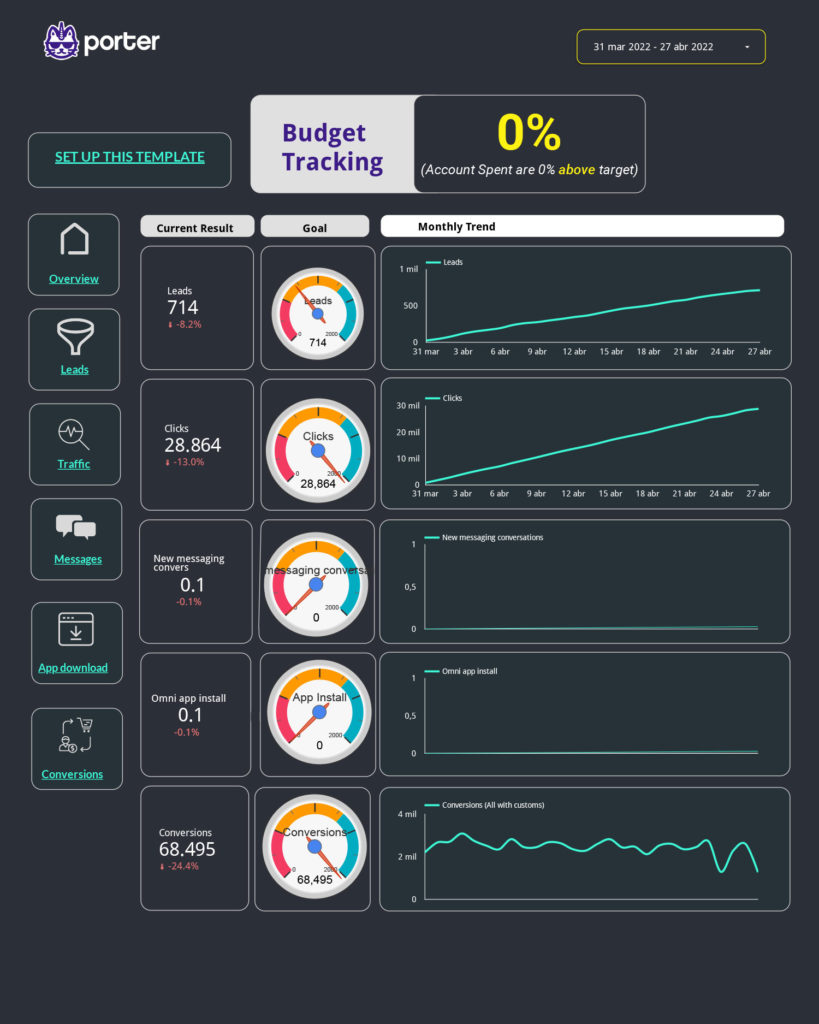An Ad pacing report should include metrics such as visibility (impressions, reach), engagement (click-through-rate, conversion rate), conversion metrics (conversions, cost per conversion). The data should be segmented by campaign, channel (social media, display ads), audience, content (image, video), objective (awareness, lead generation), and date. For example, you can analyze impressions by campaign, compare CTR across different channels, or analyze conversions by audience sFegment.
To build a Facebook Ads Pacing dashboard, 1) connect your Facebook Ads account to your dashboard tool. 2) Select metrics such as spend, impressions, clicks, and conversions to monitor performance. 3) Segment data by campaign, channel, audience, ad set, objective, and date to understand pacing. 4) Add filters or buttons for different time periods, campaigns, or ad sets to make your report interactive. 5) Share your dashboard via PDF, scheduled emails, or links to relevant stakeholders.
Yes, Looker Studio allows you to download your report as a PDF. To do it, follow these steps:
Before downloading your report choose the date range you want to visualize on your report.
Click on the “File” menu at the top left corner of the screen.
Select “Download as” from the drop-down menu and choose “PDF.”
You can choose which pages you want to download, and also you can add a password to protect the report and add a link back to the online report.
Click on “Download” to save the report on your device.

